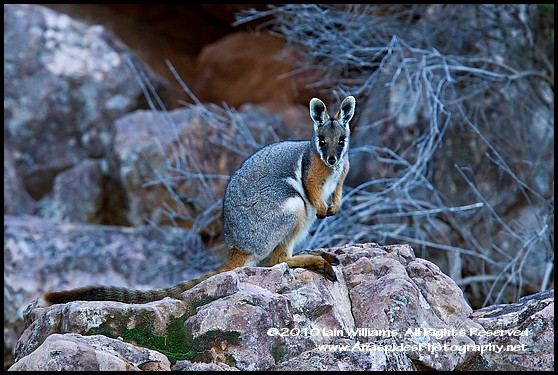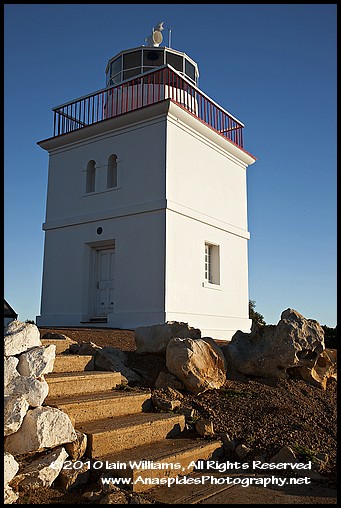Shingleback Crossing - Stop and Lend a Hand
 Friday, June 14, 2013 at 3:14PM
Friday, June 14, 2013 at 3:14PM  Road kill is always on my mind when I travel in Australia. More often than not, I see dead or maimed animals along the road verge; the by-product of modern, high speed motor transport. The further one travels away from the city limits the more prolific road kill can become.
Road kill is always on my mind when I travel in Australia. More often than not, I see dead or maimed animals along the road verge; the by-product of modern, high speed motor transport. The further one travels away from the city limits the more prolific road kill can become.
LEFT: A shingleback lizard is given a helping hand to cross a busy highway in South Australia (click for larger view).
On a recent trip to South Australia, the time taken to travel between points was longer than normal. The culprit that was slowing my travel was a relatively small slow moving animal protected by a heavy armour of interlocking pine cone-looking scales; it was the Shingleback Lizard (Tiliqua rugosa), often referred to as the pinecone or stumpy-tailed lizard.
It appeared that every time I gathered driving speed, I’d witness yet another "pinecone" crossing the road. Sometimes they would amble quite briskly across the centre-line, only to stop and raise their head, sensing the vibrations of an approaching vehicle, before doubling back into the direct line of the vehicle. I was stopping several times within a few kilometres, to dismount and rescue these ancient-looking dinosaurian-looking reptiles.
Brief Natural History
Shingleback Lizards, the largest lizard of the Skink family, live alone for most of the year; however, between September and November reunite as monogamous pairs. Shinglebacks are often seen crossing roads in pairs, with the male following the female; the same pairs may unite every year during the mating season. With the life expectancy of a shingleback reaching approximately 20 years and the fact that they are monogamous, it’s important that individual lizards are not squashed unnecessarily into the bitumen by uncaring motorists.
Unique Facts - say no to"SEX" with your brother
One very interesting aspect of shingleback reproduction is the ability of the lizards to discriminate between kin and non-kin, even after being separated from their mothers after birth. This observation has been scientifically tested by observing that they preferentially direct attention and tongue flicks to related over non-related individuals (Main & Bull, 1996). The mechanism for this unusual ability is unknown, but probably involves olfactory cues. Whatever the mechanism, not reproducing with your “brother or sister” has obvious genetic benefits and cannot be dismissed.
 Reptiles are ectothermic meaning they derive their body warmth directly from the environment. This is one reason why you never see reptiles during the winter months or on cold overcast days. It's also another reason that you often see reptiles sunning themselves on the road verge; the bitumen is warm. To aid in warming itself, the shingleback has the ability to arc and flatten its body extending its scales so that they present a greater surface area towards the sun. An added benefit to this solar warming is defence; flattening itself the shingleback can appear larger in size. The posture and size also mimics a highly venomous snake called the death adder.
Reptiles are ectothermic meaning they derive their body warmth directly from the environment. This is one reason why you never see reptiles during the winter months or on cold overcast days. It's also another reason that you often see reptiles sunning themselves on the road verge; the bitumen is warm. To aid in warming itself, the shingleback has the ability to arc and flatten its body extending its scales so that they present a greater surface area towards the sun. An added benefit to this solar warming is defence; flattening itself the shingleback can appear larger in size. The posture and size also mimics a highly venomous snake called the death adder.
LEFT: A meeting and mutual respect; a shingleback lizard (Tiliqua rugosa) is carefully carried across the highway (click for larger view).
Foraging Strategies and Navigation
Foraging strategies change throughout the year among sexes. During the two months before mating males use a time-maximization strategy, while females use an energy- maximization strategy. During mating when lizards are paired, the male eats significantly less than the female whose eating habits do not alter. During this time the male maintains a distance of a few centimeters behind the female. This behavior when paired, presumably suggests that males are on the alert for rival males. Bull & Pamula (1998) discovered that females can detect danger far more quickly when paired than when alone, and when paired the female earlier when the male is feeding. They suggested this behavior maybe an adaptation for identifying large predators, such as dingoes, feral cats and wedge-tailed eagles when plant food is only available at exposed locations.
A study by Freake (2001) found that the lizard can use celestial cues as a navigational strategy to return to its home range. It detects these cues using its parietal eye, perhaps functioning as a celestial compass.
Not a Klutz
If you have read this far, you’ll realize that the Shingleback is not just a slow-moving armoured klutz, but a marvel of evolutionary design. Therefore, the next time you see a "pinecone" crossing the road, give way to the shingleback. Better still, stop your vehicle and give the lizard a helping hand.








